Textiles and fashion
Explore some of our Textiles collection at the Horniman in this learning resource.
Download the resources below, or if you would like to make your own trails or worksheets tailored to your visit, many of the images and text below (and in our other resources) can be easily copied and pasted to your own design.
- Perhaps use images from objects located in different galleries and in the Gardens to create a challenge or simple trail through the Museum to find specific objects or places.
- Use object images to encourage independent research, for instance, find out and write down three facts about an object or group of objects. Alternatively, give facts or clues and challenge your pupils to identify mystery objects.
- Set an alphabetical challenge ie find or draw 26 objects one for each letter of the alphabet.
- Create a sketchbook challenge.
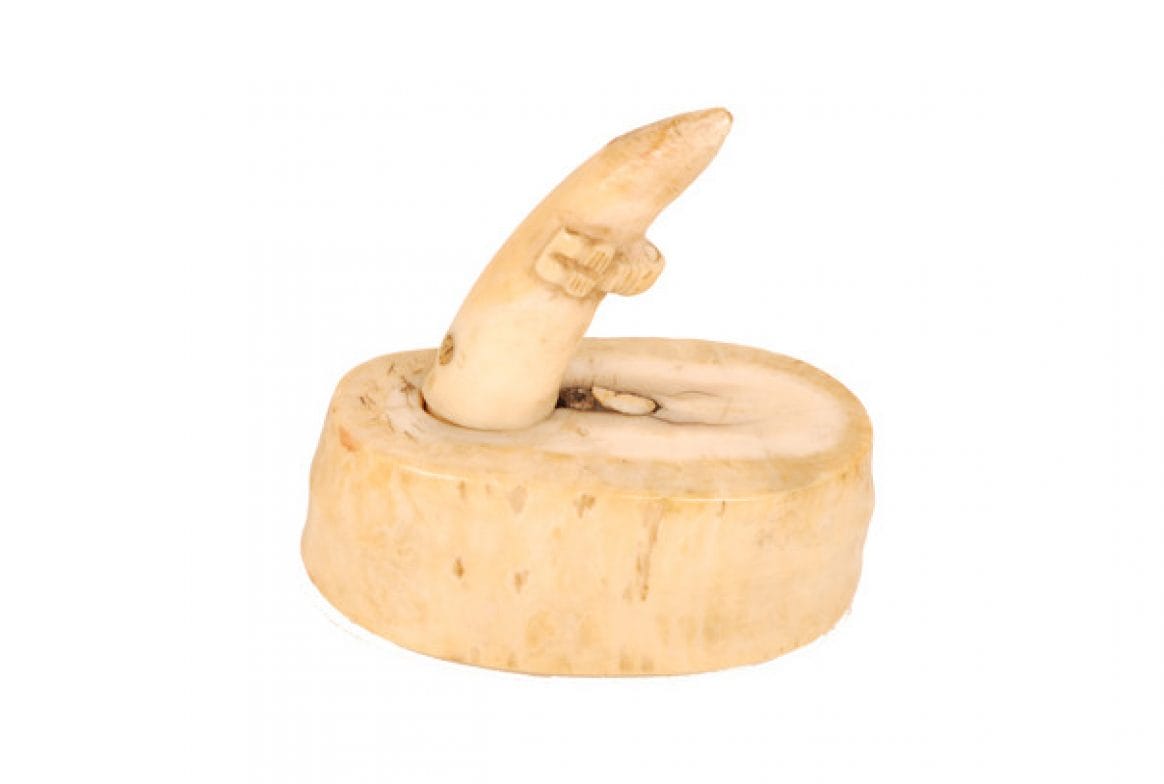
Hakakai ear ornaments
These ear ornaments known as hakakai are from the Marquesas Islands in Polynesia. These examples are carved from whale teeth. Smaller ones have been found made from pig’s tusks. Hakakai were worn by both men and women on special occasions. They are made from two carved pieces joined together with a bone pin. The curved spur is inserted through a hole in the ear lobe from the back to the front. The flat disc is then attached to the spur and is displayed on the front of each ear. On this example, there is a small carved tiki (human image) on the spur acting as a stop keeping the hakakai in place in the ear.
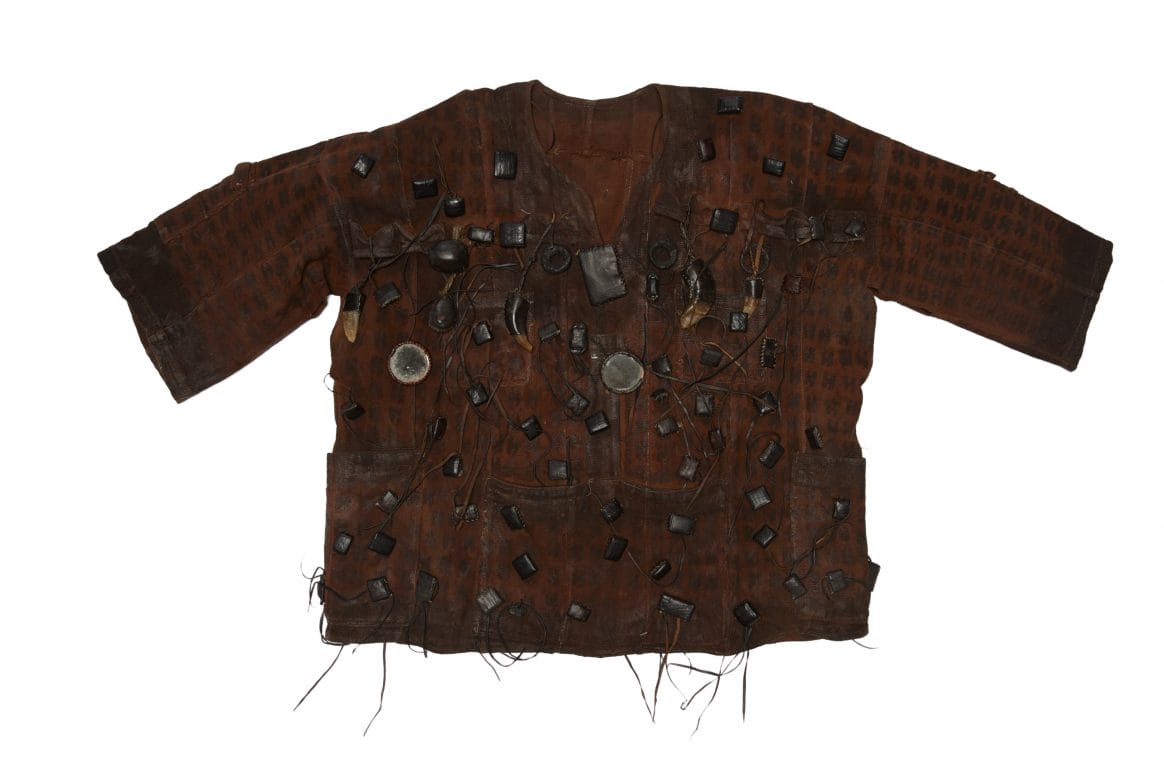
Mud cloth tunic
This hunter’s tunic from Mali, West Africa is made from mud cloth or bogolanfini. Cotton cloth is dipped in a solution made from the crushed leaves of the ngalama tree, once dry the cloth is decorated by hand with a solution prepared from river mud. Tannic acid in the leaves reacts with iron oxide in the mud to create a stable or fast dye. The strips of mud cloth are then sewn together to form a tunic. The earthy colour of the tunic helps to camouflage the camouflage the wearer in the sparsely vegetated savannahs and plains typical of Mali. This tunic has a number of amulets; small leather pouches containing verses from the Qu’ran written on folded paper attached with fibre cords. Hunters believe the amulets protect them from the vengeance of the spirits of the animals they have killed. Each shirt is unique and personalised for the wearer, some have mirrors thought to confuse prey, as well as cowrie shells and animal horn, this example also has a catapult in one pocket.
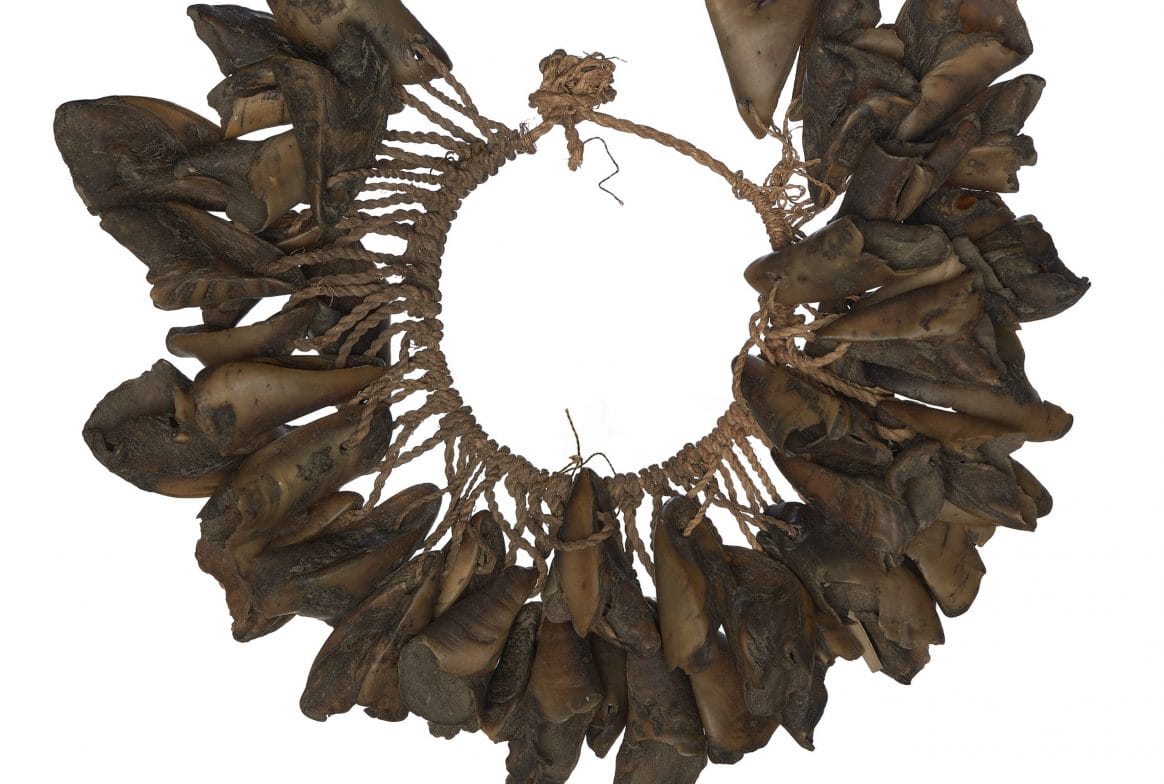
Tehuelche necklace
The Tehuelche were a nomadic tribe of hunter-gatherers living in the southern Pampas regions of Chile and Argentina. They moved through the region as the seasons and food sources changed, with their main prey being guanaco (a species of llama). The Tehuelche killed them for food as well as using their fat to grease their bodies in winter for warmth and their hide for footwear, clothing and shelter. This necklace is made from the hoof parts of the guanaco threaded onto a vegetable fibre cord, with additional tassels of twisted vegetable fibre.
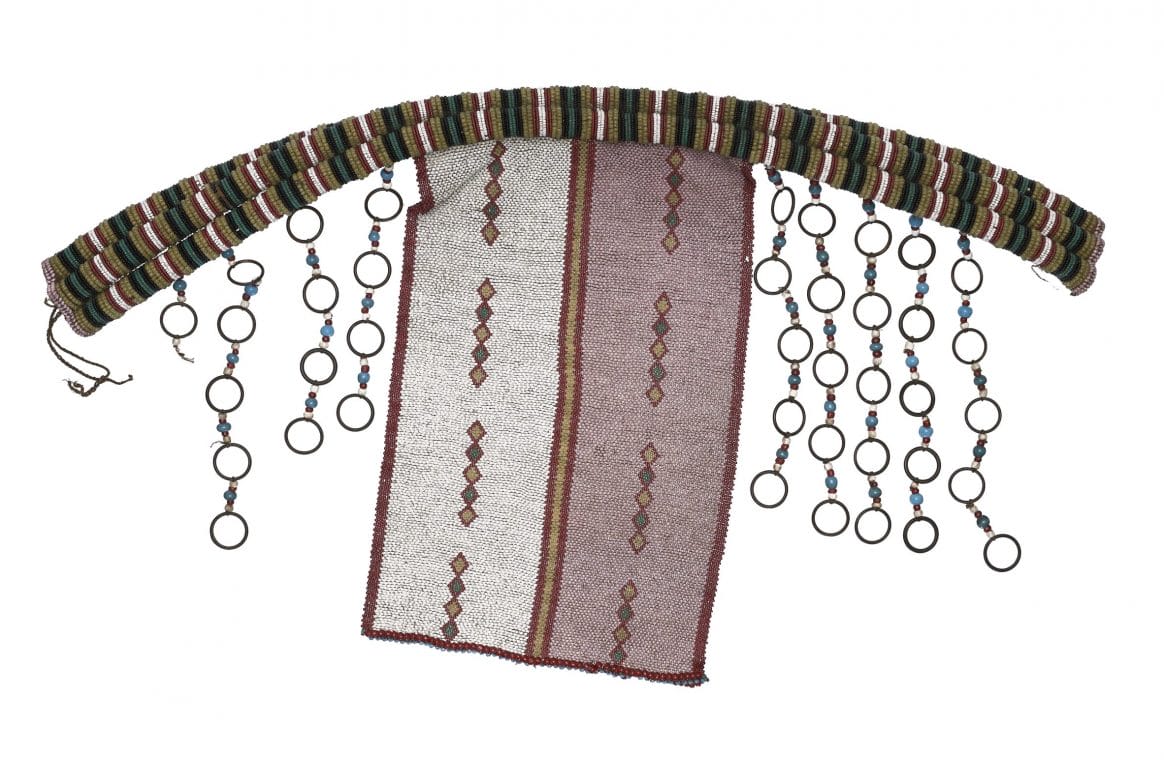
Beadwork apron
Beads are important symbols in African culture, past and present, and have many traditional uses: for example as currency. They are a fascinating insight into Africa trade, migration and movement of cultures and empires. As trade developed on the East coast of Africa, glass beads became more available and their use widened. In South Africa the use of beads for decoration is common. The complex geometric patterns and colours have particular significance, with different patterns and colours expressing different meanings for instance if the wearer is married. Before glass beads became available through trade beads were traditionally made of local natural materials like shells, stones and ivory, contemporary examples are usually plastic. It is sometimes difficult to date beadwork, as the beads are often re-used to make new objects. This waistband in pink, white, and blue, has an attached apron panel and tassels.
Can you see the different beading techniques used for the different sections?
Can you see the different beading techniques used for the different sections?
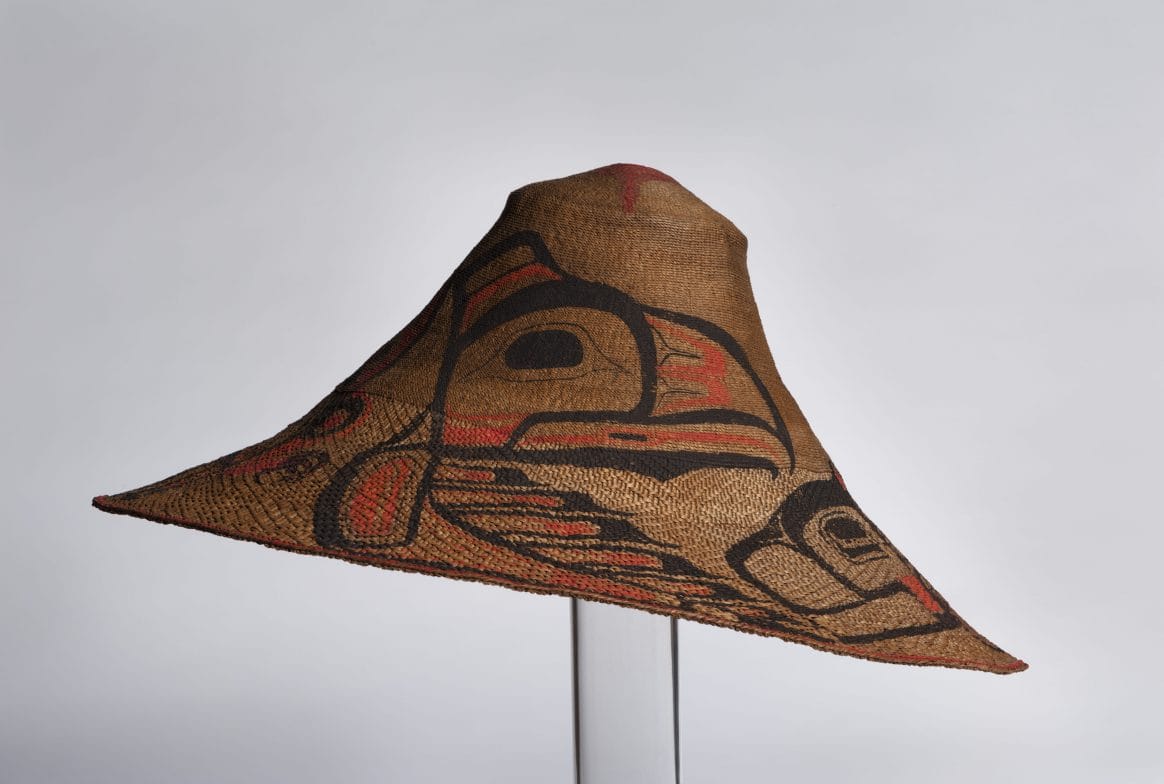
Haida rainhat
The Haida people of the Northwest Coast of Canada and Alaska produce exceptionally fine weaving. Locally available natural materials are used including different grasses, tree roots and bark. Cedar bark is stripped from living trees in sheets, shredded with wooden or bone tools then pounded flat, mixed with mountain goat wool and dried in strips. Weavers produce mats, tunics and more complicated shaped baskets and rain hats. This rain hat has been woven from prepared spruce roots and is lightweight and waterproof. Mats and hats were often brightly decorated: this one has animal forms with an “extended” figure (probably Raven), appearing on both sides, as well as a killer whale figure, outlined in red and black pigment. Raven is a particularly important ancestral being to the Haida people who tell the story of how Raven brought light to the then dark world.
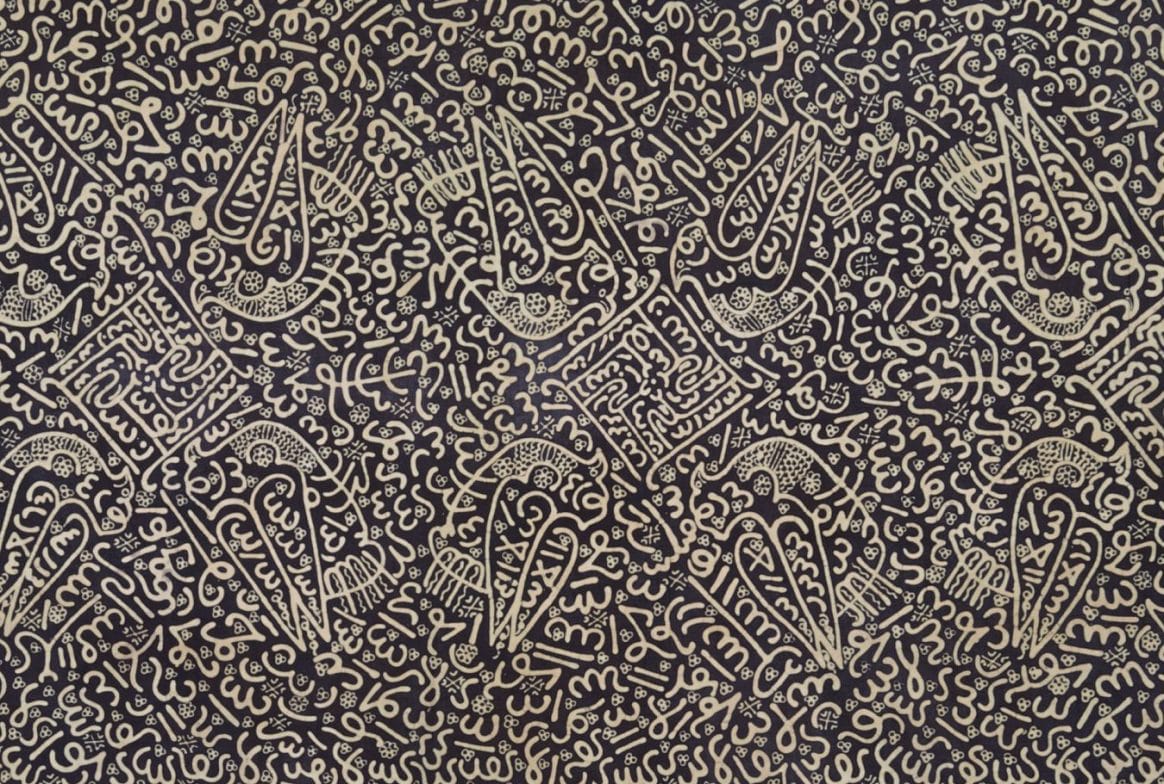
Batik fabric
Batik is a method of decorating cloth by using wax to resist the dye. Hot wax is drawn onto cloth in the desired design. The wax cools and hardens. The fabric is placed in a dyebath but where the wax covers the fabric no dye reaches it, so the colour does not take effect. The wax is then removed. This process is sometimes repeated with a number of different colours. Because solid wax can be brittle the maker sometimes cracks it to allowing seepage of dye, producing fine lines. Can you see cracks on this piece? Once the waxing and dyeing is finished the remaining wax is removed revealing the design.
This burial cloth is decorated with a complex pattern of stylised Arabic script, revealing its Muslim origin in Sumatra, Indonesia
This burial cloth is decorated with a complex pattern of stylised Arabic script, revealing its Muslim origin in Sumatra, Indonesia
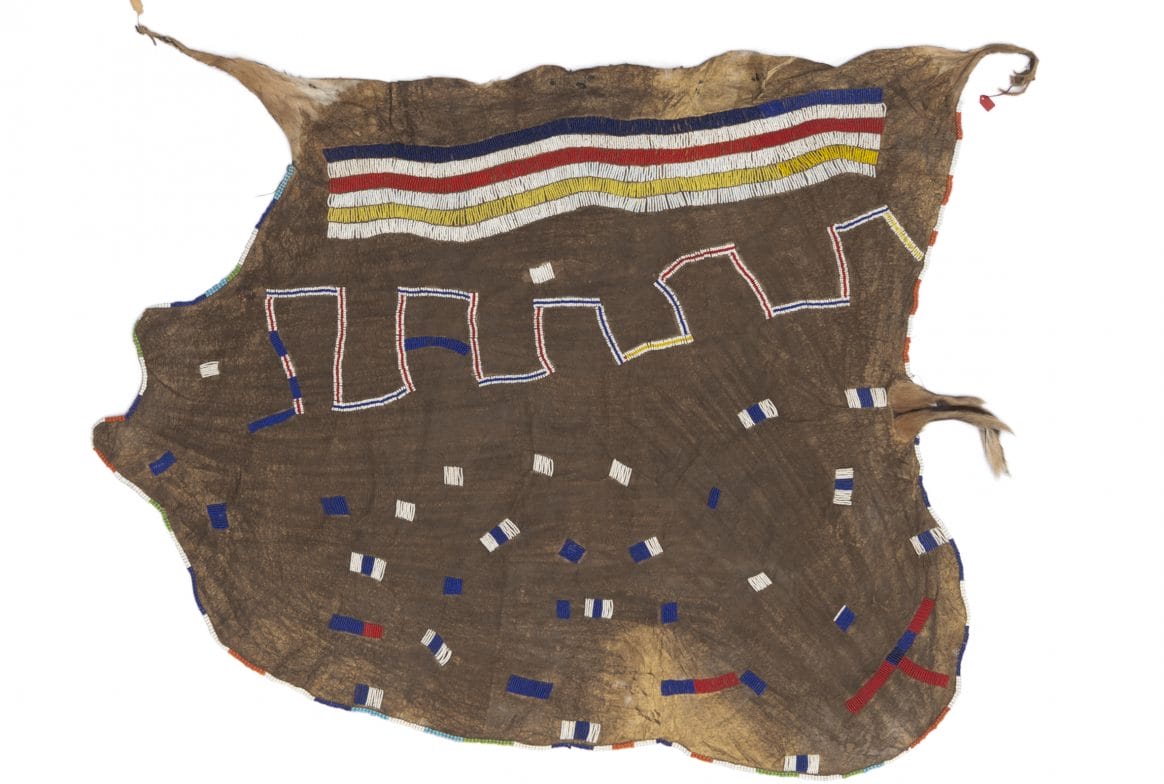
Hadza skirt
The Hadza are nomadic hunter-gatherers living in Northern Tanzania. As nomads they don’t have a permanent home so limit their possessions to the essentials they can carry, making them from local resources. This skirt is made from an animal skin, possibly impala, which has been scraped clean and left to dry in the sun. The majority of the hide has been used with the leg and tail still visible. It would have probably been wrapped around the lower body, tied at the back with the fringing visible at the front. Usually items of clothing were not owned by individuals but passed on to others to use. Often the skirts are left plain but this example is decorated with white, blue, red and yellow beads indicating status and was probably worn by a married woman – an important position within Hadza society.
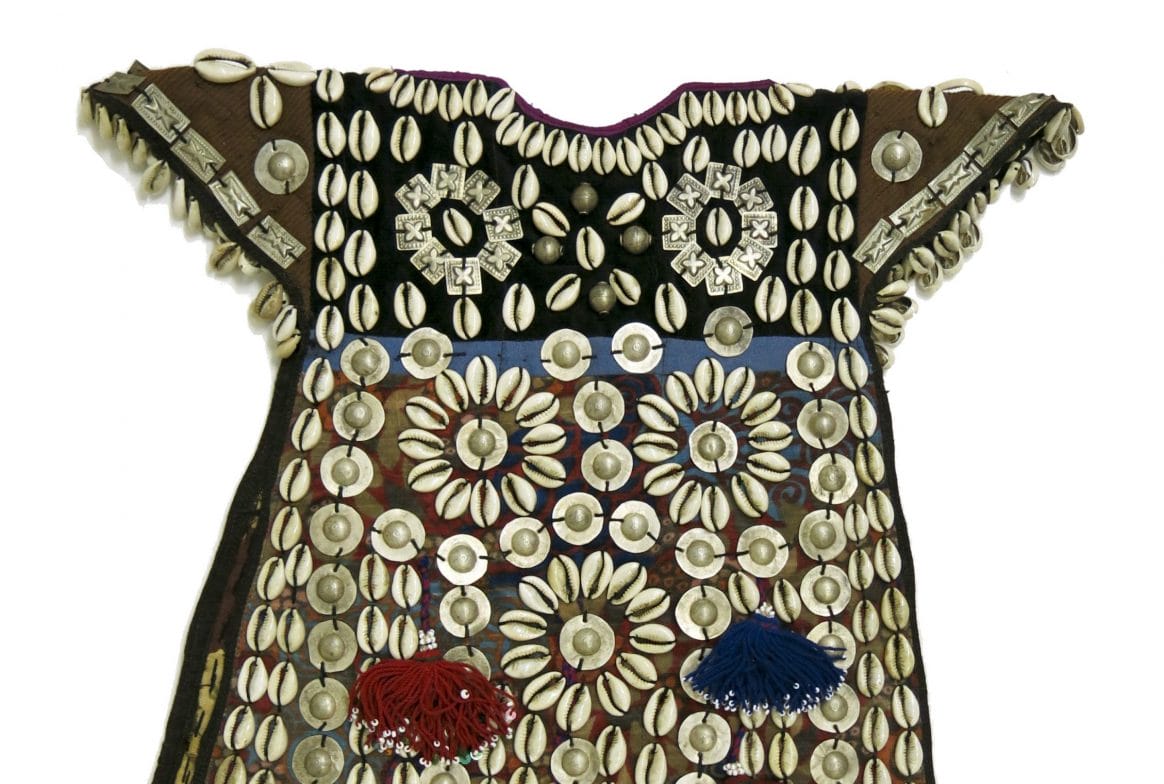
Turkmenistan clothing
This dress is from Afghanistan. It probably dates from the mid-20th century. It would have been worn for ceremonial occasions, possibly over another garment as the sides are left open. The dress is made of patterned floral fabric and hand decorated on both sides with cowrie shells, embossed metal charms and multi-coloured tassels with glass beads. The cowries and metal charms were to protect the wearer against the evil eye. The evil eye is a curse believed to be cast by a malevolent gaze, usually given to a person without their knowledge. People from many cultures believe that receiving the evil eye causes misfortune and have developed protective decorations or charms in defence against the curse.
Can you find other examples of protective charms in the museum?
Can you find other examples of protective charms in the museum?
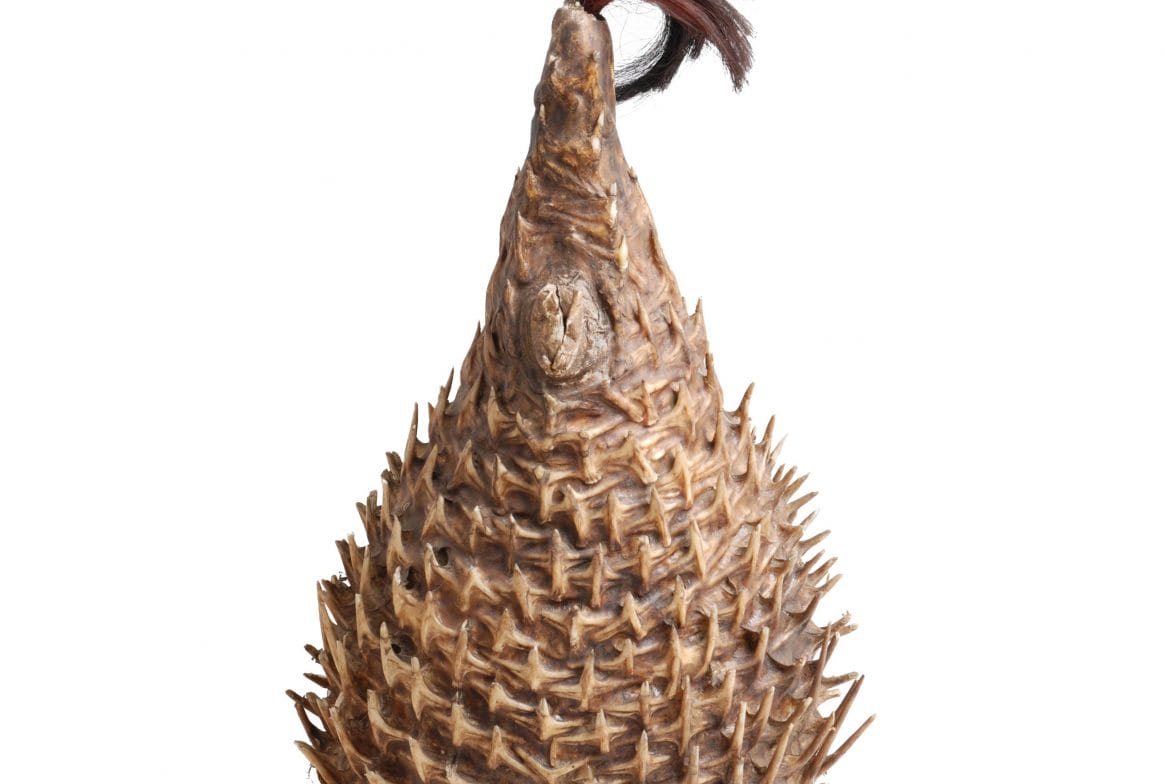
Warrior’s helmet
This warrior’s helmet from the Micronesian island of Kiribati likely dates to the late 19th century. It is made from the skin of a porcupine fish. Porcupine fish are highly toxic, therefore making a helmet like this required a lot of skill. These helmets were worn along with an elaborate suit of armour made from coconut fibre. The armour provided protection from the dangerous shark’s teeth spears, swords and daggers carried in battle, Distinctive ray skin belts were also at times worn to protect a warrior’s vital organs. Can you think of any other sea creatures that you would like to protect you?
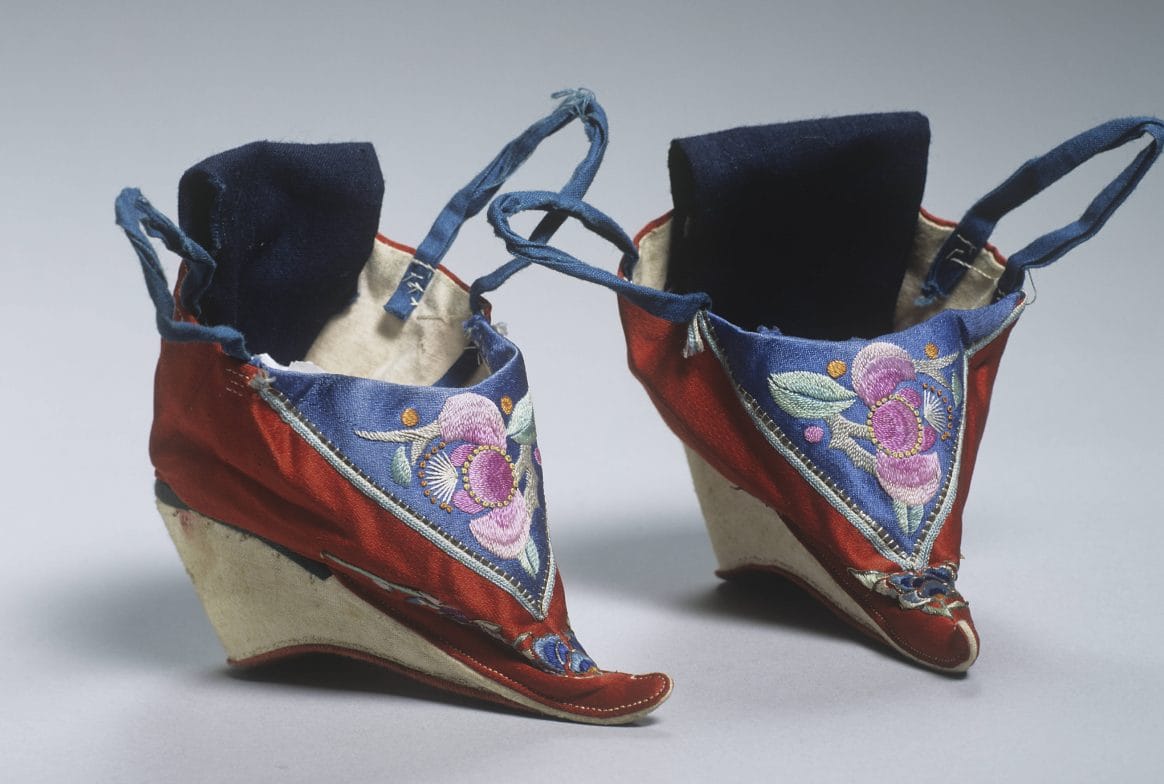
Chinese silk shoes
Foot binding which was once practiced in China was the custom of applying tight binding to the feet of young girls to modify the shape of the foot. The practice was popular as a means of displaying status. These shoes are made from cotton and silk with a covered wooden sole. The vamp (upper part of the shoe) is made of red and blue silk cloth which has been embroidered with a decorative flower design. Silk is made from the cocoons of silk worms and has been produced in Japan and China for many centuries. The fibres in the cocoon are teased out to make a fine thread then spun and woven into a strong fabric with a beautiful sheen.

Coconut palm raincoat
This raincoat is woven from coconut palm fibre. Raincoats like these were traditionally worn by farmers and fishermen during the Qing Dynasty (1644 – 1911) as protection from the rainy climate of South China. This example is a loose fitting shoulder cape with an attached apron with ties for fastening. The cape protected the upper body to the elbow with the skirt reaching the knees. Earlier forms of these capes were made from straw or sedge. These natural materials were chosen for their availability, ease of use, strong and waterproof properties when woven, the finished smooth surface making it harder for water to penetrate. Wide brimmed hats provided additional protection.
What do you think the fringing is for?
What do you think the fringing is for?
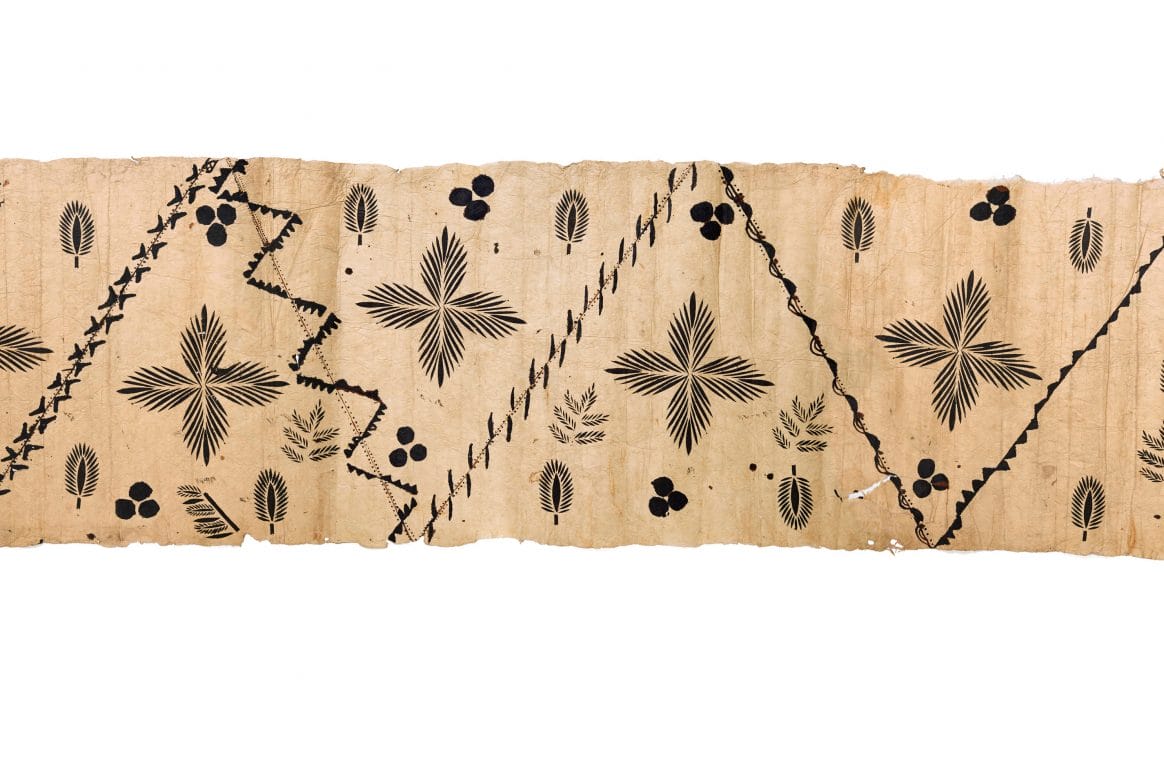
Bark cloth
Bark cloth is a versatile material that was once common in Asia, Africa, Indonesia and the Pacific. This piece of barkcloth known as masi is from Fiji. To make bark cloth, strips of the inner bark of the paper mulberry tree are carefully harvested in the wet season, soaked in water and beaten repeatedly with wooden mallets. Once the bark is thin and flexible and about 2m x 60cm in size it is left to dry in the sun. Once dried the sheets can be felted, glued and beaten together to create material of the required size. This example has stencilled designs made from black and brown mineral and vegetable dyes. Bark cloth is still worn in Fiji for special occasions.
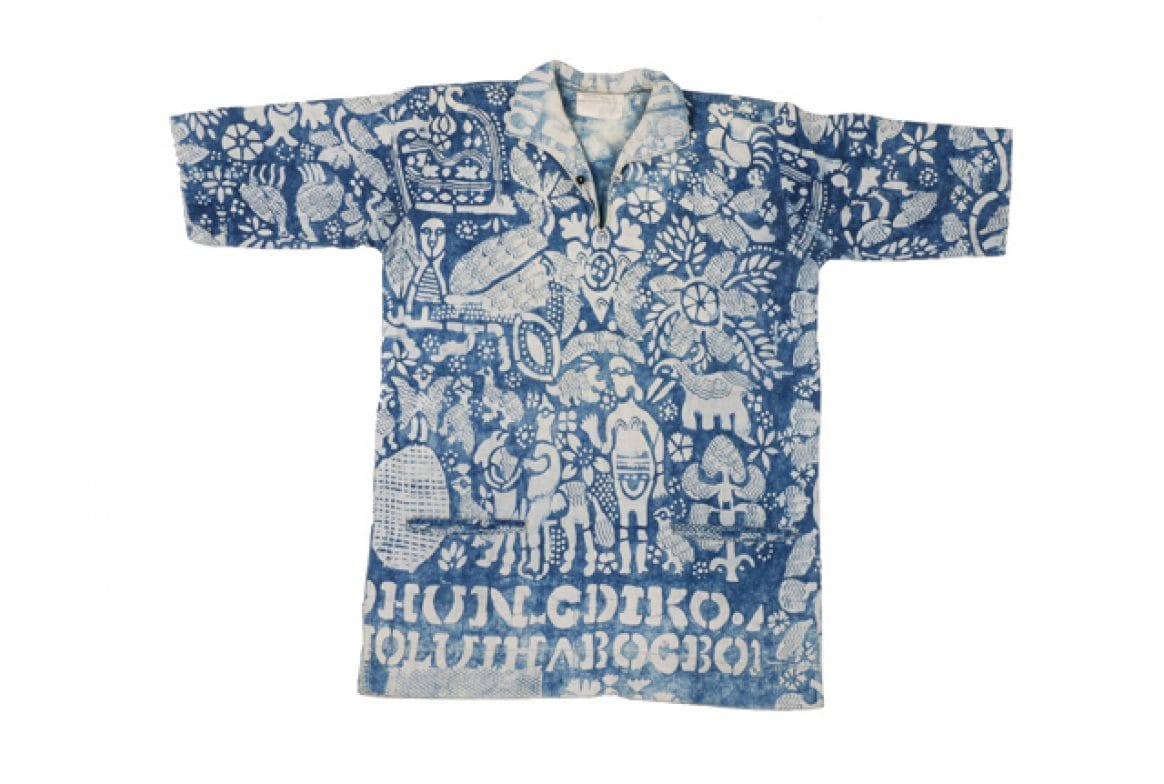
Adire shirt
This woven cotton shirt has been decorated using a resist dye technique called Adire eleko, common in South-West Nigeria. Patterns are painted or stencilled onto cotton fabric using a paste made from ground cassava, a root vegetable widely available in Africa, mixed with copper sulphate and water. Once the paste is dry the fabric is dipped in a dye made from the local indigo plant. The fabric is dip dyed several times to achieve the required shade; the deep blue-black colour seen on some clothing is highly prized by Yoruba-speaking people. Adire eleko was developed in the early part of the 20th century and originally made and worn locally by women as skirts and shawls. As trade developed with Europe men became involved in the process, and in the 1960s began to wear Adire eleko printed fabric as a way of displaying their heritage. This particular example has many human and animals as well as floral designs. What can you see?













